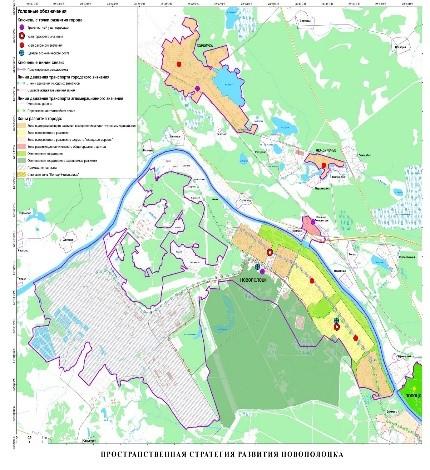Strategic planning for green urban development

Sub-title: Introduction of new urban planning tools with the participation of civil society, focusing on adaptation to climate change, reduction of greenhouse gas emissions and improvement of the environment by the means of urban planning methods
Country: Belarus
Date: 2018-2020
Category: Plan, Programme
Tags: Land-use planning, Disaster Risk Reduction, Siting of Industrial Facilities, Public Participation, Public Access to Information
Organization(s) involved: Belarus, Ministry of Natural Resources and Environmental Protection, United Nations Development Programme, district executive committees of Novogrudok, Polotsk, Gorodok, Krichev, Korma, Zelva regions, Novopolotsk city executive committee
The introduction of a new practice for Belarus to develop a strategic document at the local level, specifically the Green Urban Development Plan (GUDP), with active participation of the population and other stakeholders, is aimed at the implementation of urban policy in the field of sustainable development (SDGs 3, 7, 8, 9, 11, 12, 13, and 17), as well as addressing the objectives of the New Urban Agenda (Habitat III) and the main directions of the state urban planning policy of the Republic of Belarus.
The GUDP’s legal basis consists of the national and regional strategy of sustainable development, Directive No. 7 on improvement and development of housing and communal services of the country, Law on local self-government and Draft Law on indicative planning. The GUDP is aimed at improving the existing system of land use in the city, as well as improving the planning, development and improvement of urban areas, including industrial and communal and warehouse areas. The main part of GUDP is a set of specific harmonized actions that contribute to reducing greenhouse gas emissions through environmentally effective urban planning solutions.
The key environmental measurements of the planned improvements are the indicators used for energy consumption and greenhouse gas emissions. GUDP uses a comprehensive system of green urban development indicators based on the United 4 Smart Sustainable Cities (U4SSC) Key Performance Indicators (KPIs) to analyze the current state of the city and planning of urban projects and activities.
The strategic planning approach of the GUDP stepped up public involvement efforts through interactive discussions, surveys and interviews, workshops and consultations. The public engagement sessions took into account the impact of a range of activities and land uses, including industrial uses, in the context of achieving sustainable urban development. In contrast to conventional planning practice, the local communities were involved from the early stages of the planning process, and the views of the residents were fully considered.
By mid-2020, seven Belarusian cities had developed their GUDPs which were approved through the decisions of their local Councils of People Deputies. The documents have a similar structure, but their content is different, reflecting the specifics of a particular city and its development. Issues such as the siting of industrial facilities, assessment of their negative impact on the environment in view of climate change, and disaster risks reduction related to the industry and transport companies were considered as particularly important priorities in GUDPs of the cities of Novopolotsk, Polotsk and Krichev. For example, for Polotsk and Novopolotsk, indicators of pollutant emissions and noise pollution from railway transport and petrochemical facilities are critical, while the large cement plant in Krichev is a source of pollutant emissions and cargo transit through the city. Thus, based on the results of discussions with stakeholders, GUDPs of these cities present urban projects and programs aimed at compensating for and reducing adverse environmental impacts.
This example demonstrates an approach of coordinated actions undertaken by various stakeholders, including the general public, that lead to a green urban development planning in multiple cities of Belarus.
The details of this good practice can be found at:
- The project’s website (available in Russian): http://greencities.by/
- Webpage of the ITU-UN-Habitat-UNDP Forum on “Smart sustainable cities: technological trends, success stories and future prospects” & ITU Training on “Key performance indicators for smart sustainable cities to achieve the SDGs” event, held in Minsk, Belarus, 26-27 February 2019 (available in English and Russian):https://www.itu.int/en/ITU-D/Regional-Presence/CIS/Pages/EVENTS/2019/02_Minsk/02_Minsk.aspx
- Webpage of the GUDP of Polotsk city: https://yadi.sk/i/8MyAmqkwU3zKHQ (in Russian) and https://yadi.sk/i/rXTFw9-n7rC5_Q (in Engish)
- Webpage of the GUDP of Novopolotsk city: https://yadi.sk/i/IDlTi6v0_C0APA (in Russian) and https://yadi.sk/i/Xn65Ya2z6MiD8w (in English)
- Webpage of the GUDP of Krichev city (available in Russian): https://yadi.sk/i/W5K9aMd86ClI1A
For information about the EIB and UNECE Information Repository of Good Practices and Lessons Learned in Land-Use Planning and Industrial Safety and to access case studies from other countries, please visit the navigation page.

